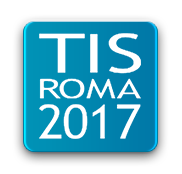NEWS
Session 6 – Traffic Management

The new perspective of environmental and social sustainability were discussed and analyzed during this 6th session of the TIS Congress. Various studies and experiences were presented by the authors, with particular reference to speed and capacity management on highways and on urban and rural roads. The session was Chaired bay Ana Bastos Silva from the Coimbra University.
Drazenko Glavic, Marina Milenković, Miloš Mladenović, Ana Trpkovic and Marijo Vidas, Assessing Sustainability Of Road Tolling Technologies – Facing a choice between a range of road tolling technologies, decision-making has to account for the effects that specific road tolling technology causes. Thus, selecting the road tolling technology becomes a question of managing the technology’s effects at an optimum level. To this end, currently wide-spread as well as new emerging road tolling technologies were analyzed. These road tolling technologies were evaluated from technical, financial, efficiency, environmental, and social aspects. The analysis is performed using multi-criteria decision-making methodology. The results provide a comparative ranking of road tolling technologies.
Dmitry Nemchinov, Pavel Pospelov, Alexandr Mikhaylov, Aleksey Kostsov and Dmitry Martiakhin, Traffic flows merging cooperation analysis – The object of the describd research is the traffic flows interaction in the merging zones of on-ramps. First of all it tooks into consideration that the traffic density increase and change of the vehicles dynamic greatly influence on the driver’s behavior. The second is that on-ramp merging zone is a source of increase of traffic flow local density causing reduced speeds, capacity drop and congestion. The field data collection had been conducted on the multi-lane highways (2 to 5 lanes in each direction) in 2015. The results of data processing are presented in this article.
Nuno Gregório, Ana Bastos Silva and Alvaro Seco, Speed Management in Single Carriageway Roads: Speed Limit Setting Through Expert-Based System- This model enables the selection of adequate speed limits by taking into consideration a wide set of explanatory variables, aiming at describing the infrastructure, land use, local safety and operational characteristics. Hence, the major objective of this work is to provide a generalized decision-support methodology for speed limit setting in interurban single carriageway roads, crossing different types of road environments, considering a range of objective variables. This work thoroughly describes the methodological approach to be used in this phase, which involves the evaluation of experts and the collection of a set of variables related with the road environment. Some early results, regarding these evaluation, were presented and discussed.
Federico Autelitano, Erika Garilli and Felice Giuliani, Road route planning for transporting wind turbines in Europe – The road infrastructure had to accommodate a wide range of complex vehicle configurations for the transport of wind turbine components (nacelles, tower sections and rotor blades), which are often considered over-size/overweight loads by the transport authorities. The authors proposed an operational planning strategy, based on maximum swept path width, to facilitate the identification of optimal routes for rotor blades transport. The methodology, which does not substitute a rigid swept path analysis, could be used by the road managing authorities for checking planimetric restrictions and constraints on their road in-frastructure and for a ready evaluation of possible abnormal road transport corridors.
Davor Brcic, Marko Sostaric and Krešimir Vidović, Sustainable Transport, Parking Policy In Travel Demand Management – The parking policy and parking demand management is an unavoidable tool which is used to make changes in current modal split due to the excessive private car usage in the urban environment. The goal of the study is to show the fundamental reasons for using parking policy and parking demand management in the City of Zagreb, and to show an analysis of the current state of policy with the basic advantages and disadvantages. The analysis is used to make conclusions on defining future approach to parking demand management policy in the City of Zagreb as a part of the comprehensive travel demand management approach.
Fabio Galatioto, Vittoria Parisi, Ecaterina McCormick and Carl Goves, Modelling traffic and ambulance behaviors using microsimulation: The LIFE Project – The preliminary results of the application of a microsimulation model (VISSIM, PTV) to replicate the behaviour of ambulances and Rapid Response Vehicles (RRVs) in urban area were presented, showing how different reactions of general traffic can impact on the travel time of an ambulance or RRV. The microsimulation model setup within the project has been developed to understand and evaluate the impacts and the best scenarios to improve ambulance response time and gains in cost-saving, whilst on balance mitigating adverse impacts such as residual congestion.
__________________
The origianal programme also included further presentations but for unpredictable reasons the speakers could not be present at the TIS congress.
Rodrigo Mesa-Arango and Aldo Fabregas, Traffic Impact of Automated Truck Platoons in Highway Exits – This research conducts a microscopic traffic simulation experiment to study the critical factors affecting travel time and travel time reliability for drivers taking highway exits in the presence of automated truck platoons (ATPs). Variables related to traffic intensity, percentage of truck traffic in platoon formation, platoon size, and the existence of exclusive lanes for platoons are found to impact overall travel time and travel time reliability. Therefore, policy makers and traffic authorities need to define new rules to mitigate the impacts of ATPs. Results from the microscopic simulation experiment support the use of predefined platoon dispersion parameters and allocation of exclusive lanes in the vicinity of highway exits to improve overall travel time and reliability.
CHAIRMAN: Ana Bastos Silva
